
The Alfa Romeo 412 Spider Vignale was a racing car built in 1939 with a Touring body then changed in 1951 by Vignale who used a more modern and aerodynamic livery in line with Alfa Romeo style of that period. It took part in different races with the original body but also with the one made by Vignale.
One-off belonged to Felice Bonetto until 1953, it was sligthly modificated during the years for road use. 412 passed away in the early 1960s.
The car’s origins: the 12C-37 saved from the war
“I remember a itemized list of experimental racing cars existing at the Experience Service right after the war. It was the end of 1945.” In this way the memory about this car made by Elvira Ruocco, manager of the Alfa Romeo Historical Archive from 1983 to 2005, begins. She continues: “From this itemized list it appeared there were two 412 completed, (of 4 made), and one of them was located at the headquarter of Portello and anothe one was in another warehouse. Although I remember very well at the Triuggio decentralization a chassis complete with engine was in storage, another engine was storaged together with the 412 hospitalized in the Melzo decentralization.“
Its Story
The 412 was built in 1939 by Touring on the chassis of the 8C 2900A. Its engine is the 12-cylinder 4500, the same as the 12C of 1937. It had its debut on May 31, 1939 at the G.P. of Antwerp and it classified first and second thanks to the race drivers Giuseppe Farina and Raymond Sommer, and second at the G.P. of Luxembourg in 1939 thanks to Clemente Biondetti.
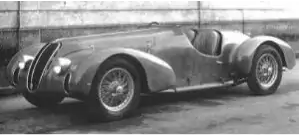
After the Second World War one of the four speciments produced (according to the book wrote by Fusi) was sold to the Swiss Willy Daetwyler, who led it to victory in different mountain races and in 1948, he won the G.P. of the Bremgarten.

The chassis shared with the 8C 2900-A was identified with the number 412151. Probably this number was used to named the car. It was equipped with a 12-cylinder V engine of 4495 cm3, built with two monoblocks 6 cylinders, which developed up to 430 hp and was turbocharged. It was designed by Vittorio Jano in 1937.
Therefore, the 412s derived from the 12C-37 single-seat, from which they inherited their engine. In 1936, the Grand Prix Alfa Romeos were called 12C-36s and they had an engine of 4,1 liter V12 and a similar, if not identical, car body to the 8C35 of 1935. In 1937 these cars were called 12C-37, and the engine was increased at 4,5 liters, but on a new and lower chassis.
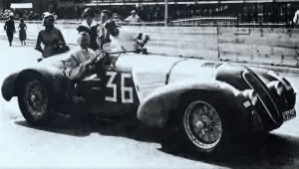
On account of the subsequent limitation of the engine size for Gran Prix cars (3 liters), the 12 cylinders became useless, and were used since 1939 for sports-type races. With the Touring car body, the 412151 took part in different races, including the Mille Miglia of 1950 (Bonetto – Casnaghi) and the Targa Florio of 1950.
Carrozzeria Vignale
In 1951, the Alfa Romeo 412 of Felice Bonetto took part at the “Giro di Sicilia”, from 31 March to the first of April, but it off the road wrecking its car body. So, coachbuilder Vignale built a very light Spider as a second dress, deeply modifying the previous one. With this new car, at the end of April 1951, Bonetto took part at the Mille Miglia ranking sixth with the number 427.
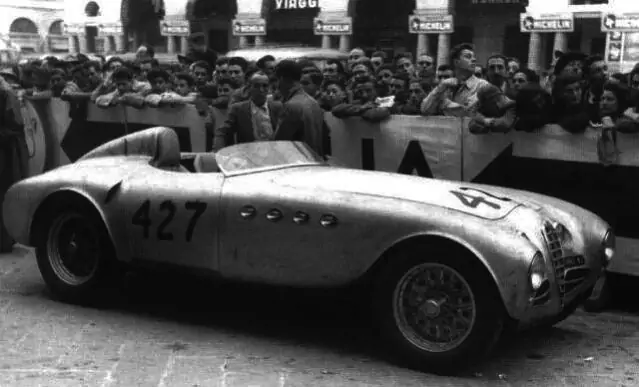
So, the intervention of Vignale can be dated to April 1951. This photography taken during the above mentioned Mille Miglia in which it’s not painted (maybe to reduce its weight for the race) and with the number 427 painted by hand. The car then participated in a race in Oporto in 1951, which it won beating the Ferrari 166s and the Maserati’s.
Successive changes and use on the road
After the Mille Miglia of 1951 the car was modified. In Oporto we can see it painted, but other photos shows the car with further modifications.

On Road & Track magazine of October 1951 we can find an article called “A special 230 hp Alfa”, written by Corrado Millanta in which we can see other images of this car. In these photos we can see that the aerodynamic appendix placed behind the drivers head has been removed (which it was present during the Mille Miglia of the same year). It was designed to eliminate the aerodynamic turbulence caused by the driver’s head on account of the windscreen which was placed very low; moreover we can notice thin moldings surrounding the ‘volume’ in relief that comes from the shield, which runs through the hood reaching the ends of the windshield and up to the end of the car. The painting has a slight chromatic variation: the central part is slightly darker, giving the idea of a two-tone or a tone on tone body car. Comparing the other Alfa’s of that period, colors could be red with the central part dark red, red with the central part blue or red with the central part red blood, like the colors of the 6C 2500 Ala Spessa of 1939- 40.
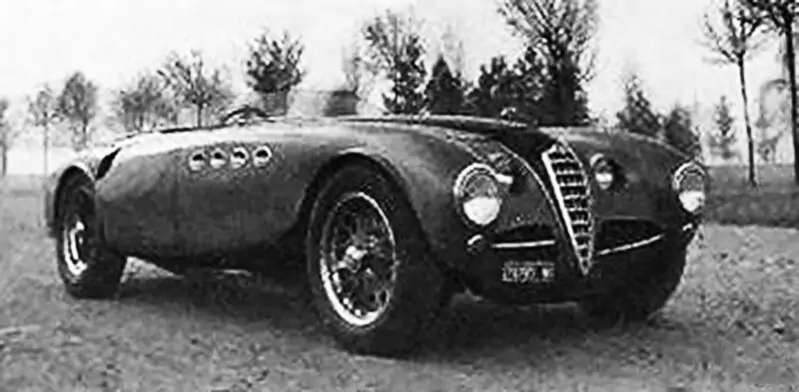
The 412 Vignale is a pure two-seater Spider, characterized by a very long hood, 4 chromed air intakes for each side placed between the front fender and the cockpit. The front has 4 headlights, two at the ends and two central plus turn signals. Moreover it has the “scudetto”, appeared in a completed shape for the first time the year before (1950) on the 1900 sedan.

Unlike the 1900s, the shield has a very subtle vertical shape, recalling the design of the one of 6C 2500 Villa d’Este and other 6C 2500 made by Touring from 1946. As mentioned before, the shield is placed on a raised volume which continues along the entire bonnet up to the windshield, creating its basis in a very clear and marked way, as for the Villa d’Este, but here its smoother and without details/chrome, probably on account of the ‘essential’ character of this racing car. This is a beautiful Alfa Romeo which expresses a strong balance between great elegance and a sporting spirit. Its line is absolutely particular because it blends features of the Villa D’Este with others of the 1900 in a really unique way that we can’t see in other Alfa Romeo. Moreover the 12-cylinder engine equipped on this car increases enormously its appeal. Starting from the end of 1951 this car was also used on road (or maybe only forprivate use only, because it no longer took part in competitions and it was registered), as mentioned in another article appeared on Road & Track Magazine in September 1952, written by Burton Harrison. The journalist is accompanied on a breathtaking journey on the 412 driven by Bonetto, probably around the San Siro stadium in Milan. During the path of the car, an increasingly large crowd is witnessing the driver’s skills with growing enthusiasm. The 412 was parked at the Scuderia Volpini and its engine had just remade by Alfa Romeo, which had recommended not to exceed 5000 rpm. Although Bonetto was ‘in love’ with this car, it had already been put for sale, as confirmed also by an advertisement appeared on Road & Track Magazine in January 1953.
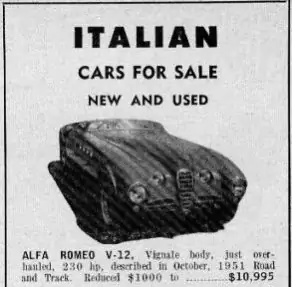
The death of Bonetto and the succession of sales
Felice Bonetto died on November 21, 1953 due to a racing accident, in Mexico, during the IV Carrera Panamericana. The 412 was sold to Cortese, who on 4/12/1954 offered it for 20 million lire to Henry Wessells, an American, well-known automobile collector, in particular of Alfa Romeo. In another letter of 12/1/1955 Cortese replied to Wessells that it was no longer available because the car had been sold in Spain, but this step is not documented enough, and probably the car was sold to the Italian branch of a Spanish dealer.
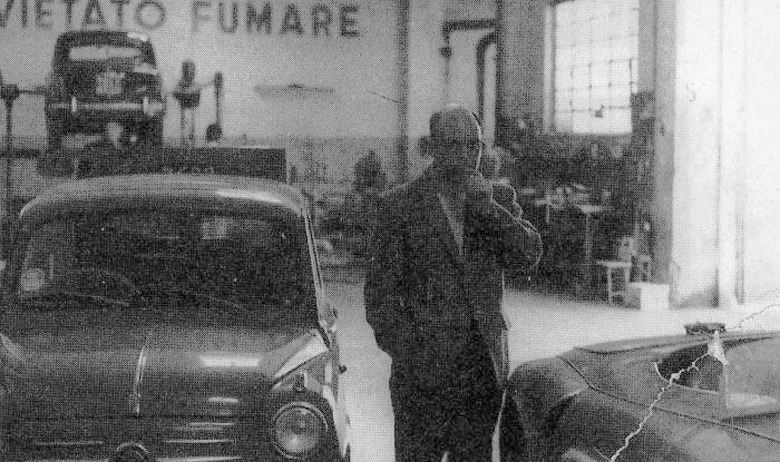
The car was ‘saw again’ by Marc Wallach in Milan in 1958, who in 1999 wrote a letter to the editor of ‘Forza’ telling this episode, when he visited the last workshop of Enrico Nardi, in via Vincenzo Lancia in Turin. In that workshop he noticed 2 touring bodied cars with 6C 2500 engines and “a wonderful Alfa Romeo V12 GP 12C, with a 2-seat body from Vignale. There’s a photo taken in the workshop where we can see Wallach near the 412, identifiable by the rear air intake, placed between the cockpit and the rear fender.
The end of the 412
Probably Enrico Nardi kept the car as it is until 1960, a year that maybe marked the end of the 412. There are few sources about the last chapter of the history of this car and all referable to the history of Nardi and his activity, so they come from a single source and they aren’t verifiable, although no other source contradicts what is told in all publications about Nardi’s activity.
In 1960 the car was dismantled: chassis, engine and body were separated and had different fates. Part of the chassis was used to make a new car (read here our special): the Plymouth Silver Ray designed by Michelotti which remained a one-off.
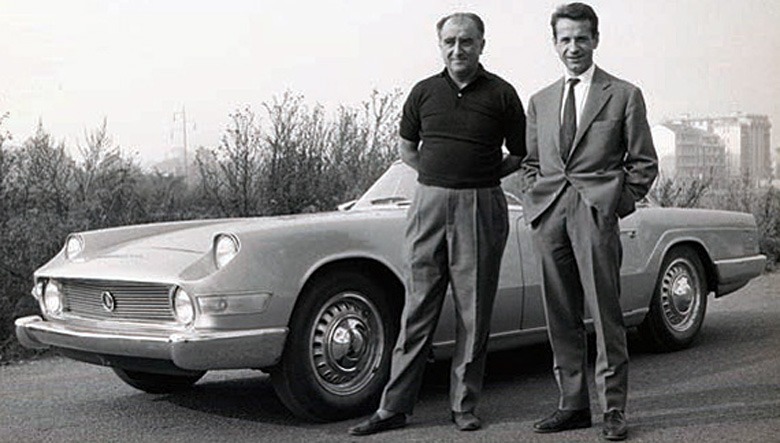
It had a Plymouth engine, an eight-cylinder 320 hp. The news is also supported by a 1992 Nardi calendar which shows it, specifying it was made on (or part of) an Alfa Romeo 4500 chassis.
The engine of the 412 remained for years in Nardi’s workshop until his daughter sold it in auction in 1998. It was bought by Larry Auriana, an American collector, who had it restored by Epifani Restorations, in Berkeley (USA). Probably he still owns it. The comment accompanying the engine at the auction is quite inaccurate but provides interesting news about the car.
There are no sources or news about the destiny of the car body of the 412 Vignale. The end of this beautiful, unique and engaging ‘dress’ is a mystery, although probably it didn’t survive, since there are no news about it.
Interesting facts
There’s at least one test of replication of the 412 Vignale, in red color. This is only an imitation with many inaccuracies compared to a photo of the original.
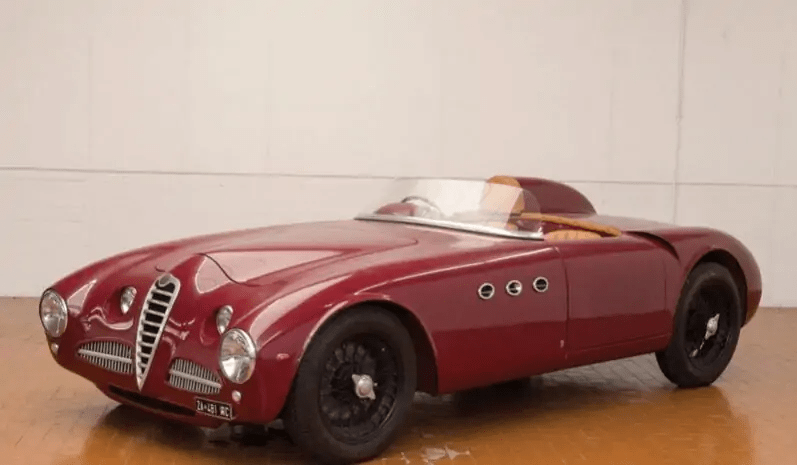
There are many scale models of this car which represent it both in the Mille Miglia race configuration and painted in different colors. Searching on internet we can find many photos of them, as further proof of the fact that 412 Vignale fascinated thousands of car enthusiasts, alfisti and not, from its birth to the present day.
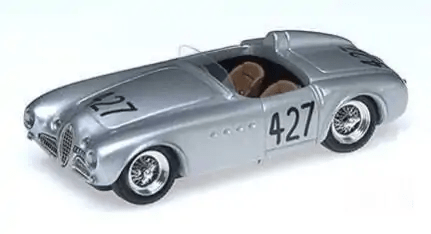
Many years have passed since the last time in which the powerful and metallic sound of the 12-cylinder Alfa Romeo engine resounded on the streets of Milan and Italy, combined to the unique livery created by Vignale. Since then the Alfa has built the history of motoring in Italy and all over the World, marking it with its unique and admired brand, even if sometimes it experienced crises and dark times. The history of this car inserts itself into all stories of cars and men who making great this brand thanks to their passion, their tenacity and their Sports Heart.

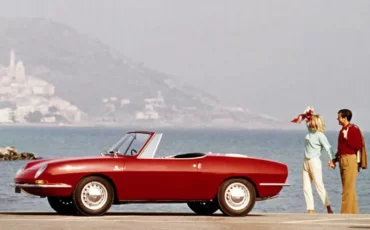
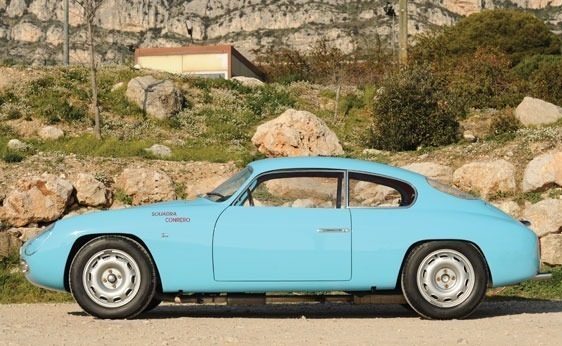
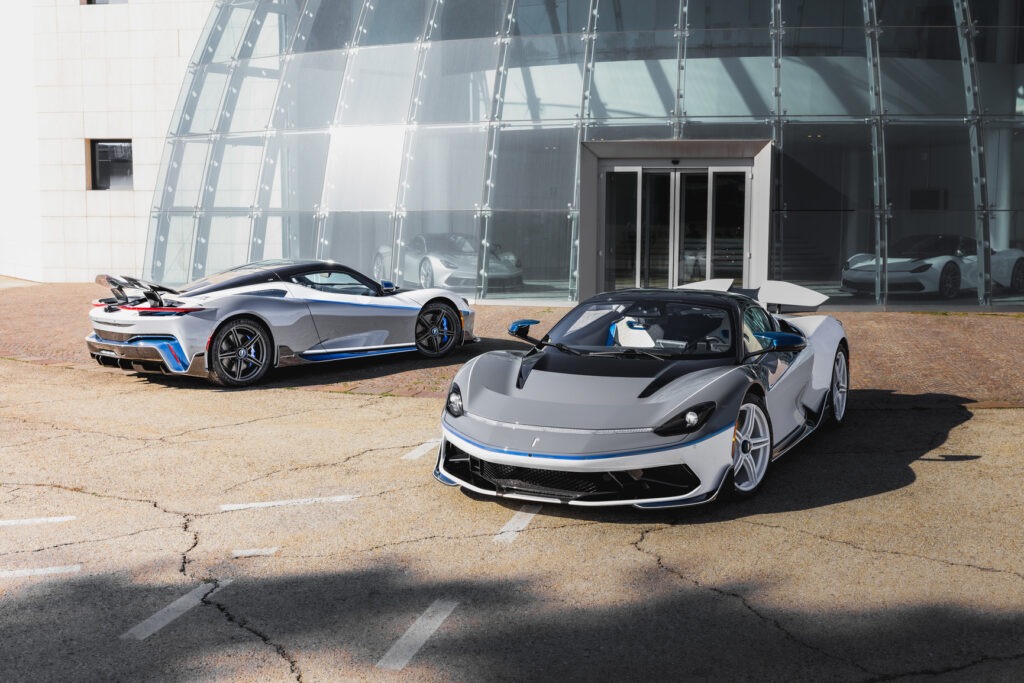
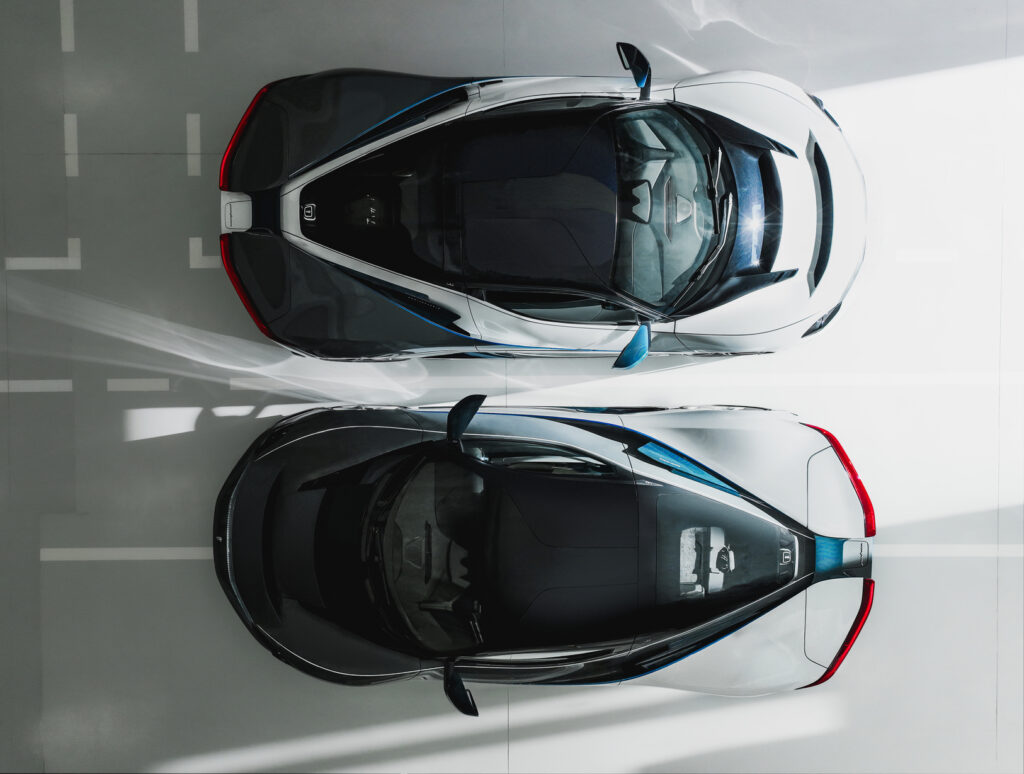
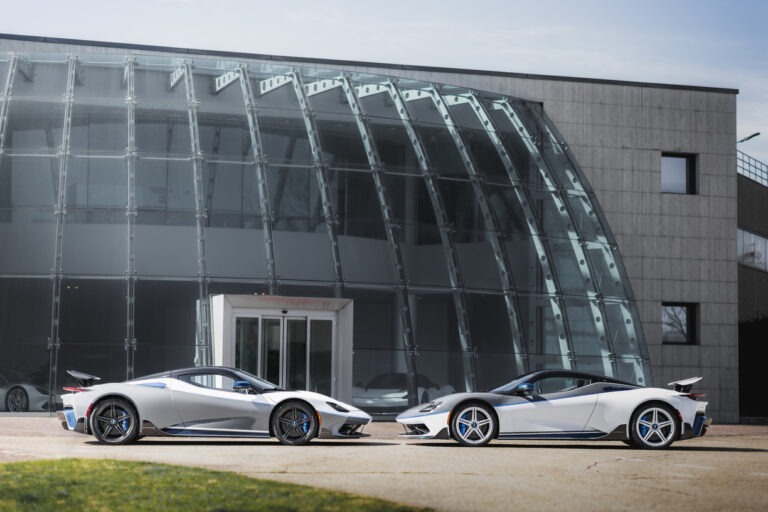
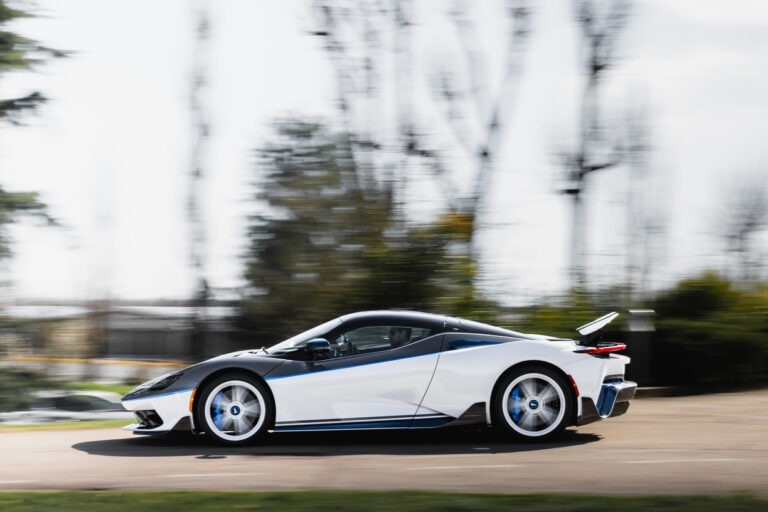
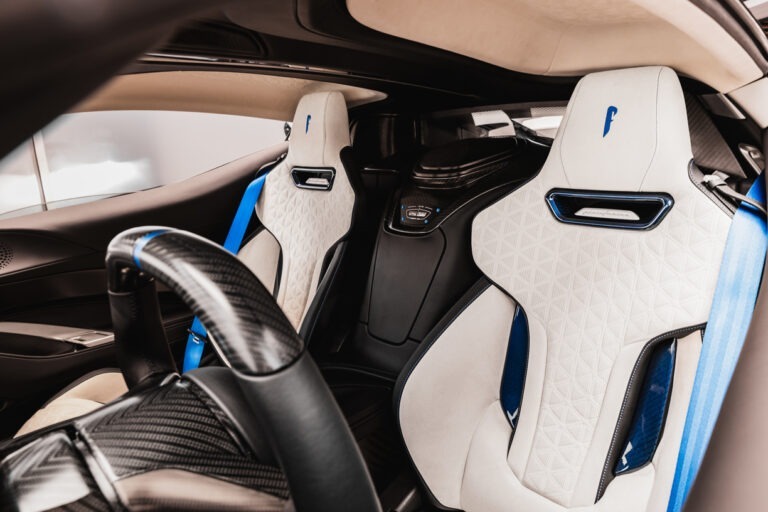
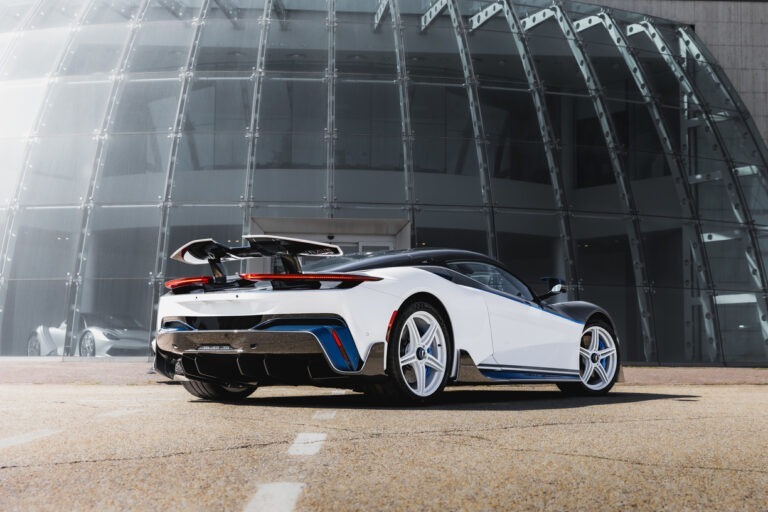
I read about the replica which is currently for sale for around $350.000 !!!! This is crazy considering that it has the 6c engine. I would never pay for a replica that much money